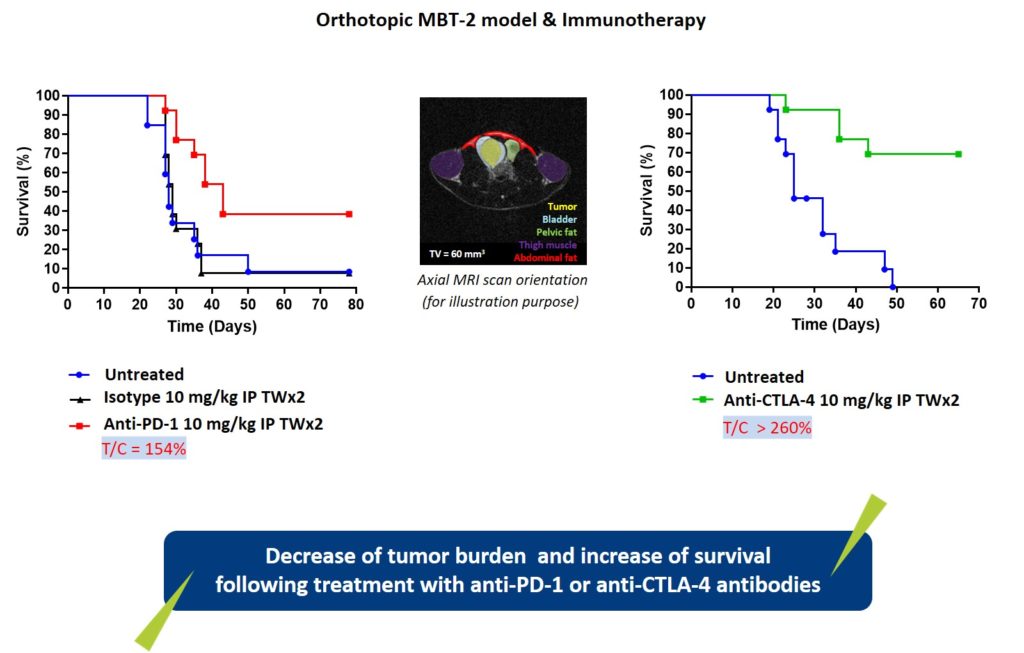
Preclinical models to evaluate new therapies for bladder cancer
Bladder cancer is the 11th cause of world cancer death and the 2nd cause of cancer in the smoking population. Despite many progresses of the diagnosis and prevention, bladder cancer remains a high unmet medical need with no real new treatments approved within the last 2 decades. Traditional chemotherapy treatments have included platinum drugs and taxane chemotherapy, although surgery and radiation remain first line therapy. Recently, the immuno-stimulant Bacile Calmette-Guerin (BCG) shows promise in about half of bladder cancer cases.
Bladder cancer has several challenging angles that make preclinical modeling non-trivial…
Firstly, contact with urine creates a tumor micro-environment distinct from that of a subcutaneous tumor, and potentially creating pH stability challenges for the drug. The elasticity of the bladder and mechanical stress on the tissue is shared by few other organs and also contributes to unique drug responses.
For these reasons, Oncodesign Services recommends using subcutaneous models for proof of concept, but then confirming efficacy in orthotopic models, with tumor tracking aided by MRI imaging.
Bladder cancer types:
- Non-muscle invasive bladder cancers (NMIBC)
- Muscle invasive bladder cancers (MIBC)
For developers of therapies for bladder cancer needing preclinical support, Oncodesign Services can offer a range of models, which can be customized to specific needs
Oncodesign Services is able to quantify tumor response to a range of therapy approaches, matching the diversity of treatments experienced by patients, such as:
- Surgical ablation of primary bladder tumor and intravesical administration of drugs on recurrent tumors
- Radiation therapy
- Chemotherapy
- Immunotherapy
- Targeted therapy
We offer a large range of models such as:
-
In vitro models
- Syngeneic mice models: MBT-2, MB49; AY-27, NBT-II (rat models)
- CDX mice models: 5637, HT-1197, HT-1376, J82, LB796-BLC, LB831-BLC, LB905-BLC, RT-112, RT-4, SCaBER, UM-UC-3
-
In vivo models
- Syngeneic mice models: MBT-2, MB49; AY-27 (rat model)
- CDX mice models: RT-4, UM-UC-3
- PDX mice model: OD-BLA-286
-
Orthotopic models
Case study:

-
Reference
Nakhlé et al. Tasquinimod modulates tumor-infiltrating myeloid cells and improves the antitumor immune response to PD-L1 blockade in bladder cancer. OncoImmunology, 2016, 5 (6): e1145333. DOI: 10.1080/2162402X.2016.1145333
Study with the AY-27 model performed at Oncodesign Services (see acknowledgements)
